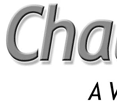What Is Yellow Journalism and Its Historical Impact on News Media?You might often hear about the term "yellow journalism," but what does it actually mean? This sensationalist reporting style shaped the landscape of news media in significant ways. From exaggerated headlines to dramatic narratives, its origins date back to the 1890s. Understanding its impact, especially during the Spanish-American War, reveals how it influenced public opinion and government actions. So, how does this historical phenomenon still echo in today’s media practices? Definition of Yellow JournalismYellow journalism refers to a style of news reporting characterized by sensationalism that often prioritizes emotional impact over factual accuracy. This type of journalism arose from the intense competition between Joseph Pulitzer’s New York World and William Randolph Hearst’s New York Journal in the late 19th century. It relied heavily on attention-grabbing headlines and sensationalized narratives, often emphasizing themes of crime, scandal, and human interest to attract readers. During the Spanish-American War, yellow journalism played a significant role in shaping public opinion, particularly with regard to events such as the explosion of the USS Maine. Reports at that time often included exaggerations or unfounded claims, which contributed to an increase in public support for military action. Although yellow journalism experienced a decline by the early 20th century, its influence persists in some aspects of modern media. The tendency towards sensationalism in certain news outlets continues to raise questions regarding the accuracy and integrity of news reporting today. This ongoing concern highlights the importance of scrutinizing sources and fostering a commitment to factual reporting in journalism. Origins of Yellow JournalismIn the late 19th century, a competition between newspaper publishers Joseph Pulitzer and William Randolph Hearst contributed to the emergence of yellow journalism. This term, which became prominent in the 1890s, characterized a style of journalism that emphasized sensationalized reporting. Both Pulitzer and Hearst utilized exaggerated headlines and dramatic storytelling in an effort to increase circulation of their publications in the New York newspaper market. The intensification of their rivalry coincided with the Spanish-American War, during which the reporting on the sinking of the USS Maine played a significant role in shaping public opinion and U.S. foreign policy. The portrayal of this event, along with other stories, was often exaggerated to attract readers’ attention. Additionally, the comic strip "The Yellow Kid," which featured in Hearst’s newspapers, contributed to the popularization of the term yellow journalism and reflected the broader trends in media consumption and public engagement during that era. This period marked a significant shift in journalism, highlighting the impact of media on public sentiment and actions taken by the government. Key Characteristics and TechniquesYellow journalism is characterized by its use of sensationalist tactics to attract readers. This type of journalism often features attention-grabbing headlines, exaggerated narratives, and a heavy emphasis on crime reporting. Prominent figures in this field, such as Joseph Pulitzer and William Randolph Hearst, engaged in a competitive rivalry that led to the frequent use of emotionally charged stories and fabricated interviews in their publications. Common practices in yellow journalism include the reliance on unverified claims and anonymous sources, which often results in misleading information. This approach tends to prioritize drama and sensationalism over factual accuracy. Consequently, minor events may be exaggerated to create a perception of scandal or intrigue among the public, ultimately shaping how news is consumed and interpreted. Such tactics raise concerns about the integrity of reporting and the potential for misinformation to influence public perception. Influence of Yellow Journalism During the Spanish-American WarDuring the late 1890s, as tensions between the United States and Spain intensified, sensationalist news coverage emerged as a significant force in shaping public opinion and political action. Yellow journalism, particularly exemplified by William Randolph Hearst's New York Journal and Joseph Pulitzer's New York World, played a crucial role in influencing perceptions of the conflict in Cuba. This style of journalism often included emotional appeals, sensationalist headlines, and sometimes unverified claims, which contributed to a heightened public fervor for military intervention. One significant event that drew substantial media attention was the sinking of the USS Maine in Havana Harbor in February 1898. Newspapers heavily reported on this incident, and sensationalist narratives quickly framed it as a direct attack by Spain, leading to public outrage and support for war. The competition between Hearst and Pulitzer further amplified this phenomenon, resulting in dramatic storytelling that often lacked rigorous journalistic standards. The impact of yellow journalism during this period is recognized as a key factor in the shift towards U.S. military engagement in the Spanish-American War. This development marked a notable moment in the evolution of journalism’s role in shaping foreign policy, reflecting how media can influence national sentiments and governmental actions in times of crisis. Impact on Public Opinion and SocietyDuring the period leading up to the Spanish-American War, public opinion in the United States shifted significantly in favor of military intervention in Cuba. This change was largely influenced by the practices of yellow journalism, which was prevalent at the time. Prominent publishers such as Joseph Pulitzer and William Randolph Hearst utilized emotionally charged narratives to sway public sentiment. Their reporting often exaggerated events and focused on dramatic aspects of conflicts, which contributed to a heightened demand for U.S. action in Cuba. The proliferation of sensationalist news coverage exacerbated political corruption and fostered animosity towards perceived enemies, resulting in a polarized society. While many working-class Americans supported the aggressive foreign policies promoted by such journalism, the more affluent segments of the population sometimes expressed discomfort with this jingoistic approach. The intense rivalry between newspapers like those owned by Pulitzer and Hearst also led to a focus on sensationalism, which altered how news was consumed in America. This period marked a significant shift in media practices and had lasting effects on journalistic standards. The legacy of yellow journalism raises pertinent issues regarding journalistic integrity and the contemporary challenges posed by misinformation, often referred to as "fake news." As media continues to evolve, the lessons from this historical context remain relevant in discussions about the role and responsibilities of journalism in society. Legal Landmark Cases Affecting Press FreedomThe evolution of press freedom in the United States has been significantly influenced by a series of landmark legal cases that have defined the scope of journalistic expression. Notably, the ruling in Near v. Minnesota established a strong presumption against prior restraint, which protects the press from governmental censorship before publication. This case laid a foundational principle that the government generally can't prohibit the publication of information, thus bolstering press autonomy. In New York Times Co. v. Sullivan, the Supreme Court imposed the requirement that public figures must demonstrate "actual malice"—meaning knowledge of falsehood or reckless disregard for the truth—in libel cases. This ruling has reinforced standards for ethical journalism by setting a higher threshold for proving defamation against media organizations, thereby encouraging the dissemination of information without undue fear of litigation. Further, McIntyre v. Ohio Elections Commission affirmed the right of individuals to engage in anonymous speech, particularly in political contexts. This ruling underscores the importance of protecting dissenting voices and criticisms that may not surface if anonymity weren't safeguarded. These legal precedents collectively contribute to contemporary media practices, manifesting a balance between freedom of expression and the ethical responsibilities that accompany journalistic endeavors. Such rulings continuously inform the dialogue surrounding press freedom and its role within a democratic society. Ethical Concerns in Modern JournalismWhile journalistic integrity is a fundamental aspect of the profession, ethical concerns have arisen in modern journalism, largely due to influences reminiscent of yellow journalism. Sensationalism often takes precedence over factual reporting, which can result in misleading headlines that emphasize engagement rather than accuracy. The reliance on anonymous sources raises questions regarding transparency and accountability, which can lead to significant discourse among journalists and their audiences. Investigative journalism continues to aim for integrity, but it faces obstacles from the pervasive use of clickbait tactics. In light of these challenges, current ethical guidelines stress the importance of accuracy, contrasting sharply with the sensationalist practices that were prevalent in the late 19th century. The legacy of yellow journalism continues to influence contemporary media practices. Sensationalist techniques, which prioritize attention-grabbing headlines and exaggerated narratives, often take precedence over factual reporting. This trend complicates efforts to differentiate between credible journalism and sensationalist content, as emotional appeals remain prevalent in news delivery. The emergence of fake news is a notable challenge, highlighting ongoing difficulties in upholding journalistic integrity and ethical standards. In light of these issues, there's an increasing focus on media literacy, which aims to equip individuals with the skills necessary to critically evaluate information sources. Understanding the historical context and implications of yellow journalism is essential for navigating today's complex media environment and for identifying reliable information amidst a plethora of misleading narratives. ConclusionIn conclusion, yellow journalism dramatically shaped news reporting by prioritizing sensationalism over accuracy. Its rise during the late 19th century, especially around the Spanish-American War, highlights how media can sway public opinion. While we've made strides in journalistic ethics, the legacy of yellow journalism reminds us to stay vigilant about sensationalist tactics today. As consumers of news, it's crucial for you to seek trustworthy sources and remain critical of the narratives presented. |



